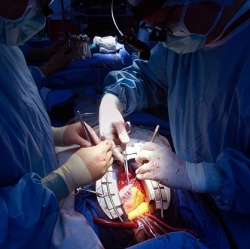
Using an inexpensive 3-D printer, Washington University biomedical engineers have developed a custom-fitted, implantable device with embedded sensors that could transform treatment and prediction of cardiac disorders.
Materials scientists have created a 3D elastic membrane made of flexible silicon material that is precisely shaped to match the outer layer of the wall of the heart.
Current technology is two-dimensional and cannot cover the full surface of the epicardium or maintain reliable contact for continual use without sutures or adhesives. The team prints tiny sensors onto the membrane that can precisely measure temperature, mechanical strain and pH, among other markers, or deliver a pulse of electricity in cases of arrhythmia.
Those sensors could assist physicians with determining the health of the heart, deliver treatment or predict an impending heart attack before a patient exhibits any physical signs.
“Each heart is a different shape, and current devices are one-size-fits-all and don’t at all conform to the geometry of a patient’s heart,” says Efimov, the Lucy & Stanley Lopata Distinguished Professor of Biomedical Engineering.
“With this application, we image the patient’s heart through MRI or CT scan, then computationally extract the image to build a 3-D model that we can print on a 3-D printer. We then mold the shape of the membrane that will constitute the base of the device deployed on the surface of the heart.”
